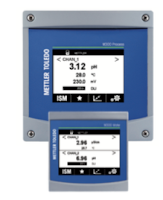 |
| Simple RTD, thermocouple, thermistor straight tube assembly Courtesy Smart Sensors, Inc. |
A thermocouple is a temperature sensor producing a micro-voltage from a phenomena called the Seebeck Effect. In simple terms, when the junction of two different (dissimilar) metals varies in temperature from a second junction (called the reference junction), a voltage is produced. When the reference junction temperature is known and constant, the voltage produced by the sensing junction can be measured and a corresponding temperature derived.
Thermocouples are widely used for industrial and commercial temperate control because they are inexpensive, exhibit appropriate accuracy for many applications, have a fairly linear temperature-to-voltage output curve, come in many “types” (different metal alloys) for many different temperature ranges, and are easily interchangeable. They require no external power to work and can be used in continuous temperature measurement applications from -185 Deg. Celsius (Type T) up to 1700 Deg. Celsius (Type B).
Common application for thermocouples are industrial processes, the plastics industry, kilns, boilers, steel making, power generation, gas turbine exhaust and diesel engines, They also have many consumer uses such as temperature sensors in thermostats and flame sensors, and for consumer cooking and heating equipment.
 |
| Coil wound RTD element (image courtesy of Wikipedia) |
RTD’s (resistance temperature detectors), are temperature sensors that produce a measurable change in resistance as the temperature of the RTD sensing element changes. They are normally designed as a fine wire coiled around a bobbin (made of glass or ceramic), and inserted into a protective sheath. They can also be manufactured as a thin-film element with the pure metal deposited on a ceramic base much like a circuit board.
 |
| Thin-film RTD element (image courtesy of Wikipedia) |
The third most common temperature sensor is the thermistor. Thermistors work in a similar fashion to RTDs, in that they are a resistance based device, but instead of using pure metal, thermistors use a very inexpensive polymer or ceramic material as the element. The practical application difference between thermistors and RTD’s is the resistance response curve of thermistors. It is very non-linear, making thermistors useful over a narrower temperature range than RTDs.
 |
| Thermistor bead with wires (image courtesy of Wikipedia) |
Temperature sensors are available in an almost infinite number of assemblies and configurations to accommodate every conceivable application. Share your application with a product specialist and take advantage of their application knowledge and experience.


